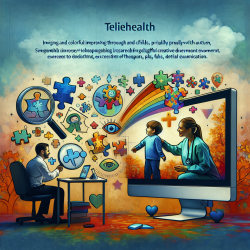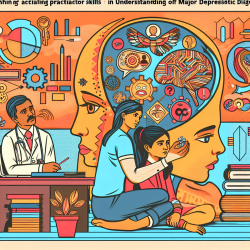As a speech-language pathologist deeply committed to improving outcomes for children, I am thrilled to share insights from a recent study titled A Pilot Study Comparing the Efficacy, Fidelity, Acceptability, and Feasibility of Telehealth and Face-to-Face Creative Movement Interventions in Children with Autism Spectrum Disorder. This research, conducted by Su et al., offers valuable data-driven findings that can significantly enhance our therapeutic practices, particularly in the context of telehealth.
The study compared the efficacy, fidelity, acceptability, and feasibility of creative movement (CM) interventions delivered face-to-face (F2F) and through telehealth (TH) for children with autism spectrum disorder (ASD). The findings revealed that both delivery methods were effective in improving motor skills, social communication, and behavioral-affective outcomes. Here are some key takeaways and practical tips for practitioners:
Key Findings
- Efficacy: Children in both F2F and TH subgroups showed similar improvements in motor skills, including bilateral coordination, strength, agility, and locomotor skills. These improvements were measured using standardized assessments such as the Bruininks-Oseretsky Test of Motor Proficiency (BOT-2) and the Test of Gross Motor Development (TGMD-2).
- Behavioral Outcomes: Both subgroups exhibited comparable enhancements in positive/interested affect, socially directed verbalization, interpersonal synchrony, and dual/multilimb motor coordination during training sessions.
- Parental Feedback: While parents in the TH subgroup reported greater effort in supervising and redirecting their child's attention, they still found the intervention appropriate and beneficial. However, they rated the TH sessions as less satisfying compared to F2F sessions.
- Trainer Feedback: Trainers faced more communication and technological challenges with TH delivery but noted greater parental involvement. The session durations and fidelity scores were comparable between the two subgroups.
Practical Tips for Implementing Telehealth Interventions
Given the promising results of telehealth interventions, here are some strategies to optimize your practice:
- Engage Parents as Partners: Encourage parents to act as "therapists in the room" by providing manual support and participating in activities. This not only helps in maintaining the child's attention but also empowers parents.
- Optimize Technology: Conduct pre-meetings with families to set up videoconferencing software, optimize audio settings, and ensure a stable internet connection. Provide step-by-step instructions for using the technology.
- Use Visual and Verbal Cues: Offer clear visual demonstrations and verbal instructions to facilitate learning. Utilize picture schedules and exaggerated key components to make the activities more understandable for the child.
- Provide Training Materials: Share music and training materials with families to reduce audio lag and enhance engagement. This allows children to follow along more effectively during the sessions.
- Foster a Sense of Community: Use the gallery view in videoconferencing to create a sense of community and encourage social interactions among participants.
Encouraging Further Research
While this study provides robust evidence supporting the efficacy of telehealth interventions, it also highlights areas for further research. Future studies should focus on:
- Randomized controlled trials with larger sample sizes to validate these findings.
- Exploring ways to reduce the technological and communication challenges faced by trainers.
- Investigating the long-term effects of telehealth interventions on motor and social communication skills.
By embracing the outcomes of this research and continuing to explore innovative approaches, we can significantly enhance the quality of care for children with ASD. To read the original research paper, please follow this link: A Pilot Study Comparing the Efficacy, Fidelity, Acceptability, and Feasibility of Telehealth and Face-to-Face Creative Movement Interventions in Children with Autism Spectrum Disorder.










